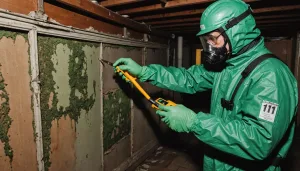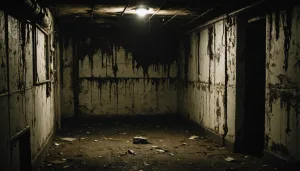Understanding the common costs associated with HVAC repairs is crucial for homeowners who want to manage their expenses effectively. HVAC systems, integral to maintaining a comfortable indoor environment, can sometimes require costly maintenance or repairs. Knowing what these costs typically involve empowers homeowners with practical insights and guidance, especially when unexpected breakdowns occur.
Many homeowners are surprised by the range and variability of repair costs, which can fluctuate based on several factors, including the complexity of the repair and the specific parts required. Here’s a cost guide to help understand some typical expenses:
| Repair Issue | Average Cost Range (USD) |
| Thermostat replacement | $100 – $300 |
| Blower motor repair | $150 – $500 |
| Refrigerant leak detection and repair | $150 – $1,500 |
| Furnace ignition or pilot replacement | $150 – $400 |
| Central air conditioner repair | $150 – $600 |
| Ductwork repair | $500 – $2,000 |
Costs can vary significantly even within these averages, underscoring the importance of obtaining a comprehensive diagnosis from a reputable HVAC professional. For instance, a simple thermostat replacement might sit on the lower end of the spectrum, averaging around $100, while more complex repairs such as refrigerant leaks can escalate up to $1,500, especially in systems with hard-to-detect problems.
Homeowner advice often stresses the benefit of regular maintenance to prevent minor issues from developing into larger, more costly repairs. Scheduling routine inspections and cleanings can mitigate the risk of expensive breakdowns. Furthermore, establishing a relationship with a trusted HVAC technician may not only assure consistent service but also possibly yield more favorable repair terms.
By familiarizing themselves with these common HVAC repair costs, homeowners can make informed decisions, budget more effectively, and customize their maintenance strategies to ensure their system’s longevity and efficient operation. Keeping this cost guide in mind can provide essential preparation for whatever HVAC challenges may arise.
Factors influencing repair expenses
Several factors can significantly influence the cost of HVAC repairs, impacting how much homeowners might expect to pay. Understanding these elements can empower individuals to anticipate potential expenses and make informed decisions about maintenance and repairs.
1. Complexity of the Issue:
– The more intricate the problem, the more expensive the repair. Simple issues, such as replacing a thermostat, are straightforward and usually less costly. In contrast, complex problems like internal component failures necessitate extensive diagnostics and labor, driving up costs.
2. Parts Availability:
– Repair costs can fluctuate based on the availability and price of replacement parts. Common parts are generally less expensive and easier to source, whereas specialized components, rare for certain HVAC systems, lead to higher expenses due to their scarcity and potential need for expedited shipping.
3. Age of the System:
– Older systems often cost more to repair due to outdated parts that are no longer manufactured or harder to find. Moreover, as systems age, they may experience frequent breakdowns, necessitating multiple repairs, which incrementally increases costs.
4. Labor Rates:
– The rates charged by HVAC technicians vary widely depending on geographic location, company pricing structures, and the technicians’ level of expertise. Urban areas typically present higher labor rates compared to rural settings, influencing the overall repair bill.
5. Warranty Coverage:
– Systems still under warranty may cover parts or labor costs, reducing the financial burden on homeowners. It’s crucial for homeowners to understand their warranty terms, as failing to comply with maintenance requirements can void coverage.
6. Energy Efficiency Upgrades:
– Sometimes, during repairs, technicians might identify opportunities for energy-efficient upgrades. While these can increase initial repair costs, they often promise long-term savings on energy bills, offering an enticing trade-off for cost-aware homeowners.
7. Emergency Services:
– The timing of necessary repairs can also affect costs. Urgent repairs during non-business hours, like weekends or holidays, often incur additional fees. Homeowners might save by scheduling non-urgent repairs during regular business hours.
8. Required Permits:
– In some locales, certain repairs might necessitate permits, which can add to the expense of the repair process. Homeowners should inquire about local regulations to be prepared for such costs.
Being aware of these factors can help homeowners better understand repair quotes and engage in more effective discussions with their HVAC professionals. This awareness can also refine their approach to system maintenance and repairs, aligning expectations with actual expenses. By considering these elements, homeowners are equipped to handle unexpected HVAC issues head-on, whether consulting a cost guide or relying on homeowner advice for strategic system upgrades.
Type of HVAC system
The type of HVAC system installed in a home plays a crucial role in determining repair costs and the ease of maintenance. Different systems, from central air conditioners, heat pumps, dual fuel systems, to mini-split systems, each have unique attributes and potential challenges that can influence repair expenses in distinct ways. Central air conditioning systems, for example, often involve complex ductwork. Repairs might require accessing difficult-to-reach areas in attics or basements, potentially escalating labor costs. Additionally, these systems might need specialized parts only available through the manufacturer, further increasing expenses due to shipping and procurement time.
Heat pumps, while highly efficient and versatile, can be more complex to diagnose due to their dual functionality in providing both heating and cooling. Repairs often require technicians skilled in both modalities, and if specialized components are needed, this could again result in higher costs. For example, repairing the reversing valve, unique to heat pumps, can be labor-intensive and costly.
Ductless mini-split systems are increasingly popular for their zoning capabilities and efficiency. However, their advanced technology and inherent complexity can lead to expensive repairs, particularly if multiple indoor units are involved. Any issue with the refrigerant lines or the communication between the indoor and outdoor units demands expert attention, which can carry a premium price.
For homeowners, understanding their system’s configuration is paramount for anticipating potential repair challenges. Consulting a cost guide or seeking homeowner advice on specific system maintenance can facilitate better financial planning. For instance, homeowners can likely reduce future hassles by scheduling regular maintenance with a technician familiar with their specific type of system. Such proactive care not only fosters reliability but also prolongs system life, providing greater peace of mind.
Furthermore, if a system upgrade or replacement becomes necessary, selecting a model with a solid warranty and readily available parts can offer significant long-term savings. This foresight can mitigate the impact of unexpected breakdowns, providing a buffer against steep repair bills. By staying informed and making strategic choices, homeowners can effectively navigate the complexities of HVAC systems, ensuring both comfort and cost-efficiency.
Seasonal demand and timing
Timing can play a significant role in the cost of HVAC repairs, which is closely tied to the concept of seasonal demand. The HVAC industry tends to experience heightened activity during extreme weather seasons—namely, summer and winter—when air conditioning and heating systems are used most heavily. During these peak periods, HVAC professionals often face a surge in service calls, which can lead to increased repair costs and longer wait times for appointments. Homeowners may notice that scheduling repairs or maintenance at these times can sometimes result in higher fees compared to off-peak seasons.
When systems are operating at full capacity, small issues may be exacerbated into larger problems, requiring more urgent attention. This rush for services not only affects pricing but also availability; technicians are commonly booked to capacity, prompting higher charges for expedited services or overtime work. Understanding this pattern of demand can help homeowners strategically plan ahead and optimize their scheduled maintenance and repair activities to potentially save on costs.
By scheduling regular maintenance checks during transitional seasons—like spring and fall—homeowners can sidestep the rush associated with peak demand times. These periods are often less frantic for HVAC technicians, resulting in more flexible appointment options and possibly lower rates. Moreover, preemptively addressing minor issues through proactive maintenance can prevent them from turning into major, costly repairs when the system is under extreme use.
Another factor to take into account is the economic principle of supply and demand, which also plays out in HVAC part availability. During peak seasons, the demand for specific replacement parts might increase, leading to shortages and price hikes. Therefore, having a service plan or warranty in place can mitigate these expenses, especially if the plan includes discounted parts or labor.
It’s prudent for homeowners to consider this timing dynamic as part of their maintenance strategy, leveraging off-peak times for thorough system checks and addressing any potential issues before they escalate. By being mindful of seasonal demand patterns and adjusting their HVAC upkeep accordingly, homeowners can effectively manage repair expenses and ensure their systems remain reliable and efficient year-round. This awareness, combined with the use of a comprehensive cost guide or seeking tailored homeowner advice, can empower individuals to make financially sound decisions, sidestepping the impacts of seasonal price spikes while maintaining comfort and peace of mind in their home environment.
Tips to minimize repair costs
Minimizing HVAC repair costs involves a combination of proactive maintenance, strategic planning, and informed decision-making. Homeowners can significantly reduce the likelihood of unexpected and costly repairs by adhering to regular maintenance schedules and addressing small issues before they escalate. Investing in a reputable maintenance agreement with a trusted HVAC technician is highly recommended, as this can often include periodic system checks, cleanings, and tune-ups, which help maintain system efficiency and extend its lifespan.
Being diligent about changing air filters regularly is one of the simplest yet most effective steps homeowners can take. Clogged or dirty filters not only reduce system efficiency but also put undue strain on HVAC units, leading to potential breakdowns. Therefore, homeowners should check filters monthly and replace them as needed, particularly during peak usage seasons.
Understanding the intricacies of your HVAC system, such as the type of system and its components, can also help in minimizing repair costs. For instance, familiarizing yourself with potential trouble spots or parts that commonly require replacement can allow for more targeted maintenance and quicker diagnoses when problems occur. Consulting a comprehensive cost guide can provide homeowner advice on expected service costs and prevent surprises, enabling better financial planning for potential repairs or replacements.
Another cost-saving approach is to assess the energy efficiency of your HVAC system. Upgrading to a more efficient model may entail an initial investment but can yield substantial savings over time through reduced energy bills and lower repair costs, as newer models typically require less frequent maintenance.
Seeking multiple quotes before committing to a repair can ensure competitive pricing and prevent overcharging. Homeowners are encouraged to obtain detailed estimates that break down labor and part costs, allowing for clearer comparisons. Online reviews and recommendations can help in choosing high-quality service providers known for fair pricing and reliability.
Finally, maintaining a detailed record of all maintenance activities, repairs, and system performance issues provides a valuable reference for future servicing. This history can assist HVAC technicians in diagnosing new issues quickly and efficiently, potentially lowering labor costs and enhancing the accuracy of solutions provided.
In conclusion, the cost of HVAC repairs is influenced by various factors, from the complexity of the issue to the type of system, seasonal demand, and more. By understanding these elements and implementing informed strategies, homeowners can better manage repair expenses and maintain an efficient, reliable HVAC system. Regular maintenance, strategic planning, and informed decision-making, supported by a robust cost guide and homeowner advice, are key to minimizing expenses and ensuring comfort year-round.






